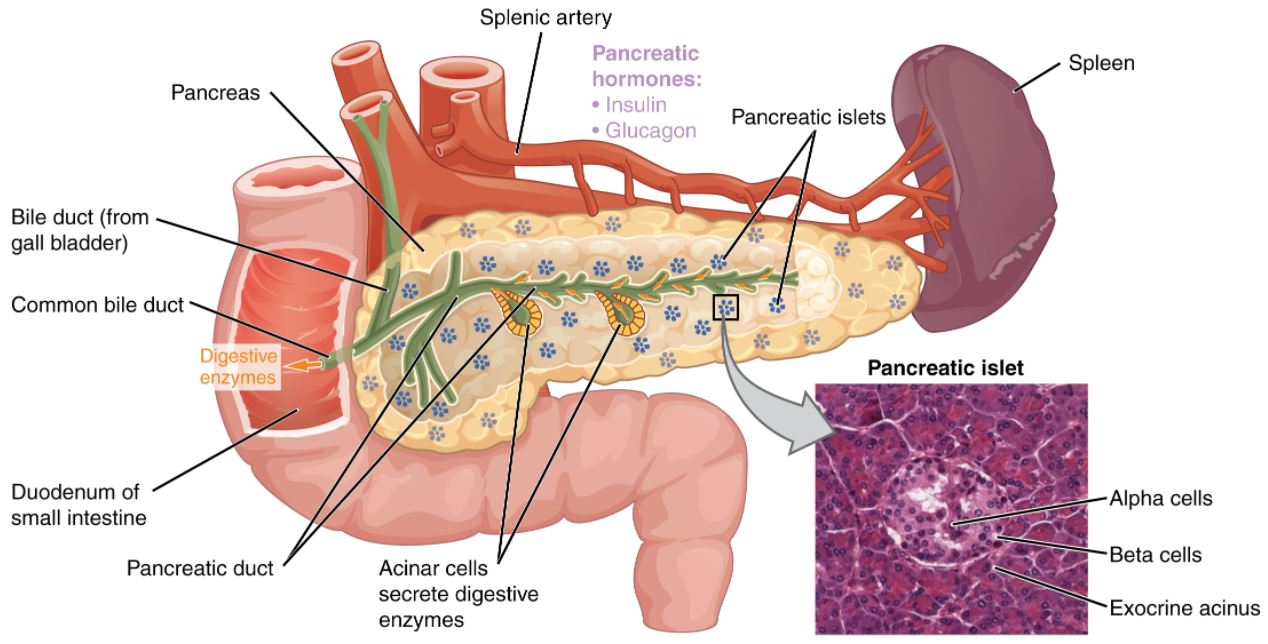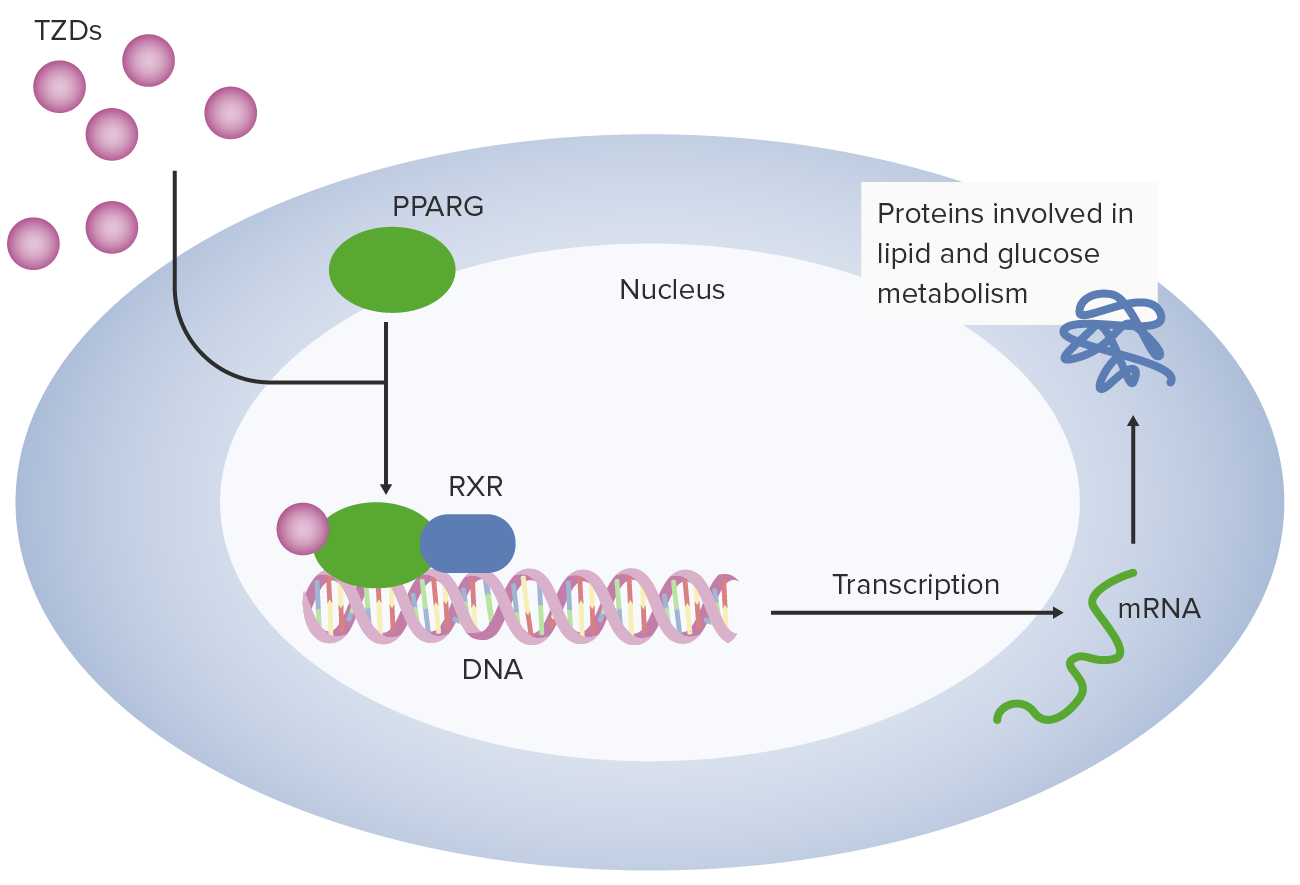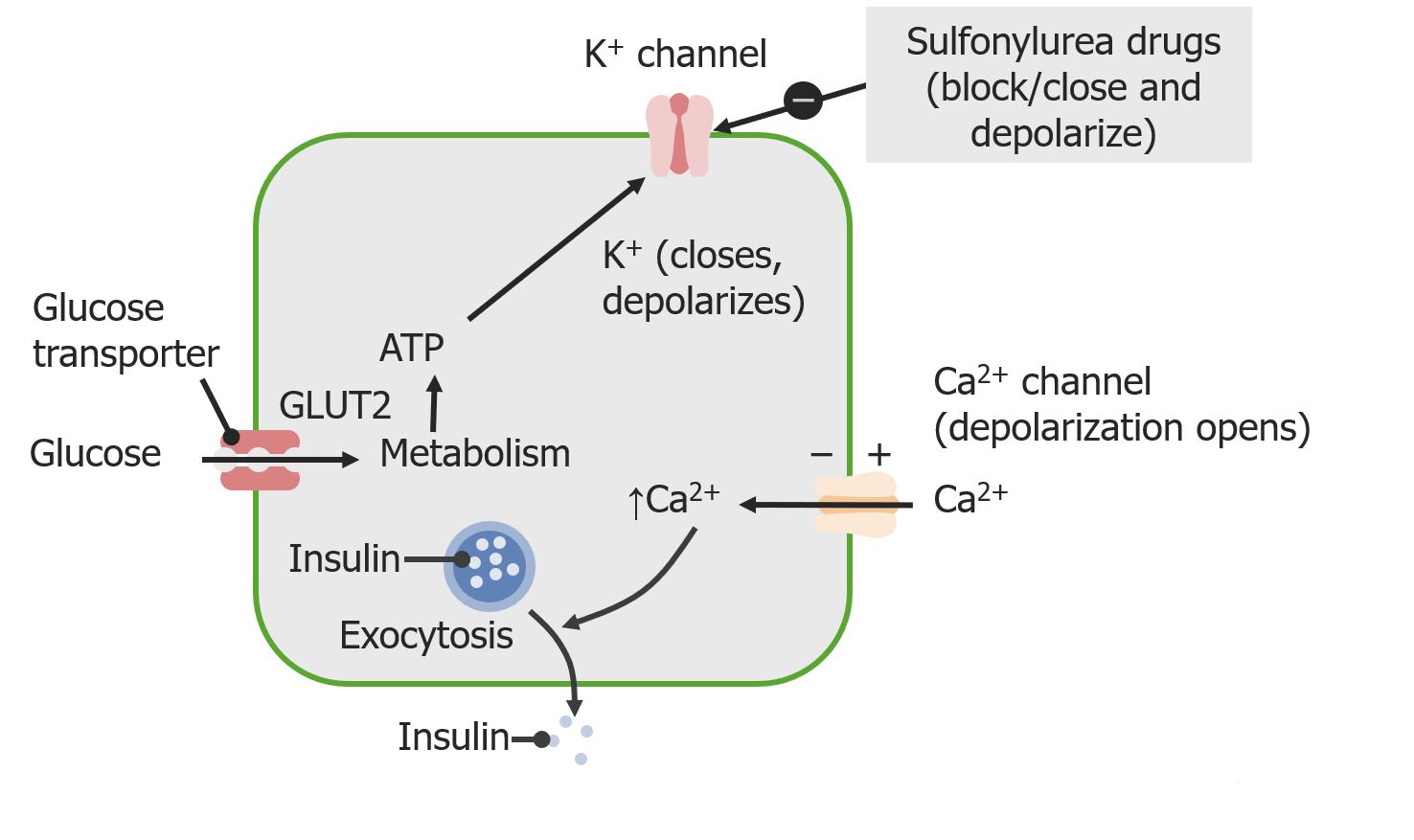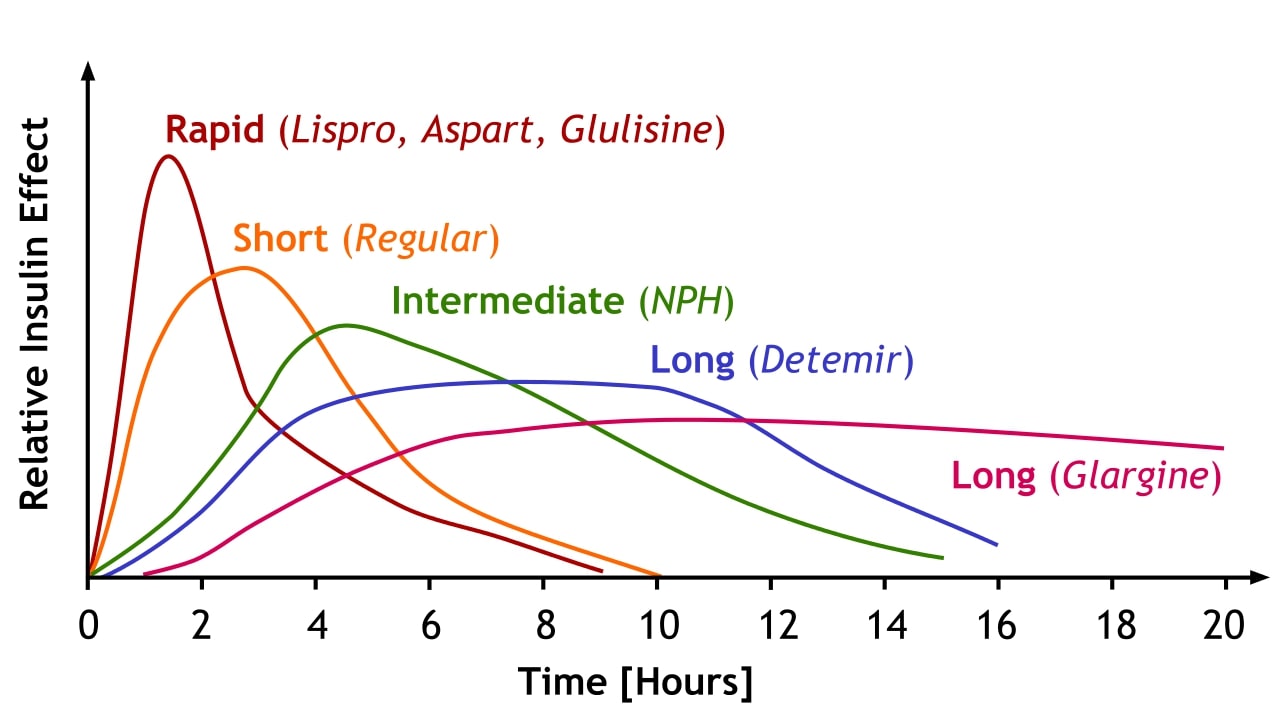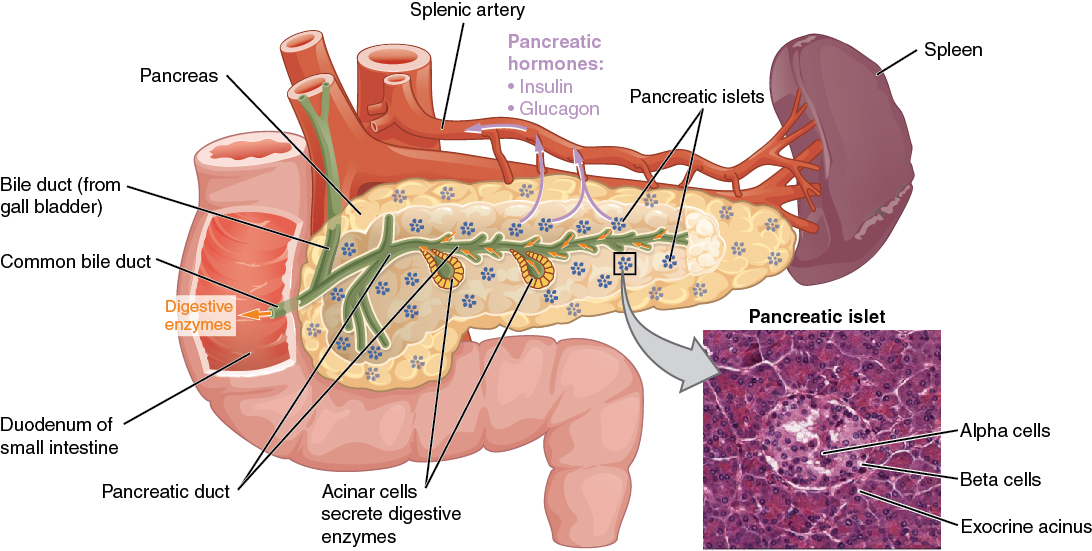Playlist
Show Playlist
Hide Playlist
Type 1 Diabetes Mellitus (DM)
-
02-03 Diabetes Mellitus part 1.pdf
-
Reference List Endocrinology.pdf
-
Reference List Diabetes Mellitus.pdf
-
Download Lecture Overview
00:00 Some of the diagnostic test you may encounter when diagnosing diabetes. The first diagnostic test that we noted in this case was a C-peptide. Pro-insulin, which is produced by the pancreas, is cleaved into insulin and C-peptide. Both of them secreted from the pancreas into the blood stream. 00:20 When you see a high level of C-peptide in the blood, usually this implies that the body is producing insulin. So in response to high blood glucose, the pancreas will produce insulin and in conjunction with it it will produce C-peptide. A low level of C-peptide implies that there is a low or even absent level of insulin produced by the body and this is the type of manifestation that you're likely to encounter in type 1 diabetes. Ketone bodies, acetoacetate, and beta-hydroxybutyrate as well as acetone are the hallmarks of the metabolic acidosis that is encountered in usually type 1 but also potentially in type 2 diabetes. When you see these ketone bodies in the urine and more alarmingly in the bloodstream, this usually implies that the patient has a metabolic acidosis due to the production of excess ketone bodies. It also implies a decreased insulin state and is actually one of the emergencies associated with diabetes mellitus that we will discuss a little bit later in the lecture. Finally, some of the auto-antibodies we mentioned in the immune forms of type 1 diabetes, a GAD-65 and an IA-2 antibody can sometimes also be used for confirmation of the diagnosis of type 1 diabetes. Interestingly enough, antibodies to GAD-65 persist longer than those of to islet cells in the case of IA-2 after the development of diabetes and may be a better test to diagnose immune-related type 1 diabetes. In type 1 diabetes, you usually see this in the setting of insulin deficiency. About 5% of the diagnosis of diabetes are associated with type 1 diabetes. 02:10 Underlying mechanisms are destruction of insulin-producing pancreatic beta cells and clinical manifestations we can usually at around 80-90% destruction. These, as mentioned, can be auto-immune or immune-mediated, they can be idiopathic, or they can be acquired from infiltrative condition such as hemochromatosis. Typically, it affects children and adolescents in the age range of 5-15. There is an image that accompanies the slide that shows a young girl with the manifestations of dehydration. You can see her eyes sunken in her orbits, she has pallor, she is wasted and thin which is a feature of her type 1 diabetes, and if you look closely at her rib cage you can see the clinical sign of intercoastal recession. This is usually manifested by children who have respiratory distress. So in the setting of this constellation of clinical findings, one would want to work up this patient for the presence of diabetic ketoacidosis. Auto-immune mediated type 1 diabetes is usually a disease of children and young thin adults but it can occur at any age or body mass index range. The initial presentation ranges from minor elevations in glucose levels to diabetic ketoacidosis. Beta-cell destruction varies. It is frequently more active in children compared to adults. Some patients with absolute insulin deficiency have no evidence of autoimmunity and have no other known cause for beta-cell destruction. This is quite rare and when this occurs these patients are said to have idiopathic or type 1b diabetes mellitus.
About the Lecture
The lecture Type 1 Diabetes Mellitus (DM) by Michael Lazarus, MD is from the course Diabetes Mellitus. It contains the following chapters:
- Diagnostic Tests for Type 1 DM
- Type 1 DM
Included Quiz Questions
Which of the following best characterizes the differences between type 1 and type 2 diabetes mellitus?
- Type 1 diabetes is an insulin deficiency due to beta-cell destruction, whereas type II diabetes is an acquired insulin resistance.
- Type 1 diabetes is an acquired insulin resistance, whereas type 2 diabetes is an insulin deficiency due to beta-cell destruction.
- Type 1 diabetes typically presents in late adulthood, whereas type 2 diabetes almost always occurs in children 5–15 years old.
- Patients with type 1 diabetes almost always present in DKA, whereas patients with type 2 diabetes often present in hypoglycemic comas.
- Type 1 diabetes develops from the sequelae of metabolic syndrome, whereas type 2 diabetes is almost always an autoimmune condition.
Which autoantibody is likely the best test to identify immune-related type 1 diabetes mellitus?
- GAD65
- ICA
- IGF-1
- ANA
Customer reviews
5,0 of 5 stars
| 5 Stars |
|
5 |
| 4 Stars |
|
0 |
| 3 Stars |
|
0 |
| 2 Stars |
|
0 |
| 1 Star |
|
0 |

